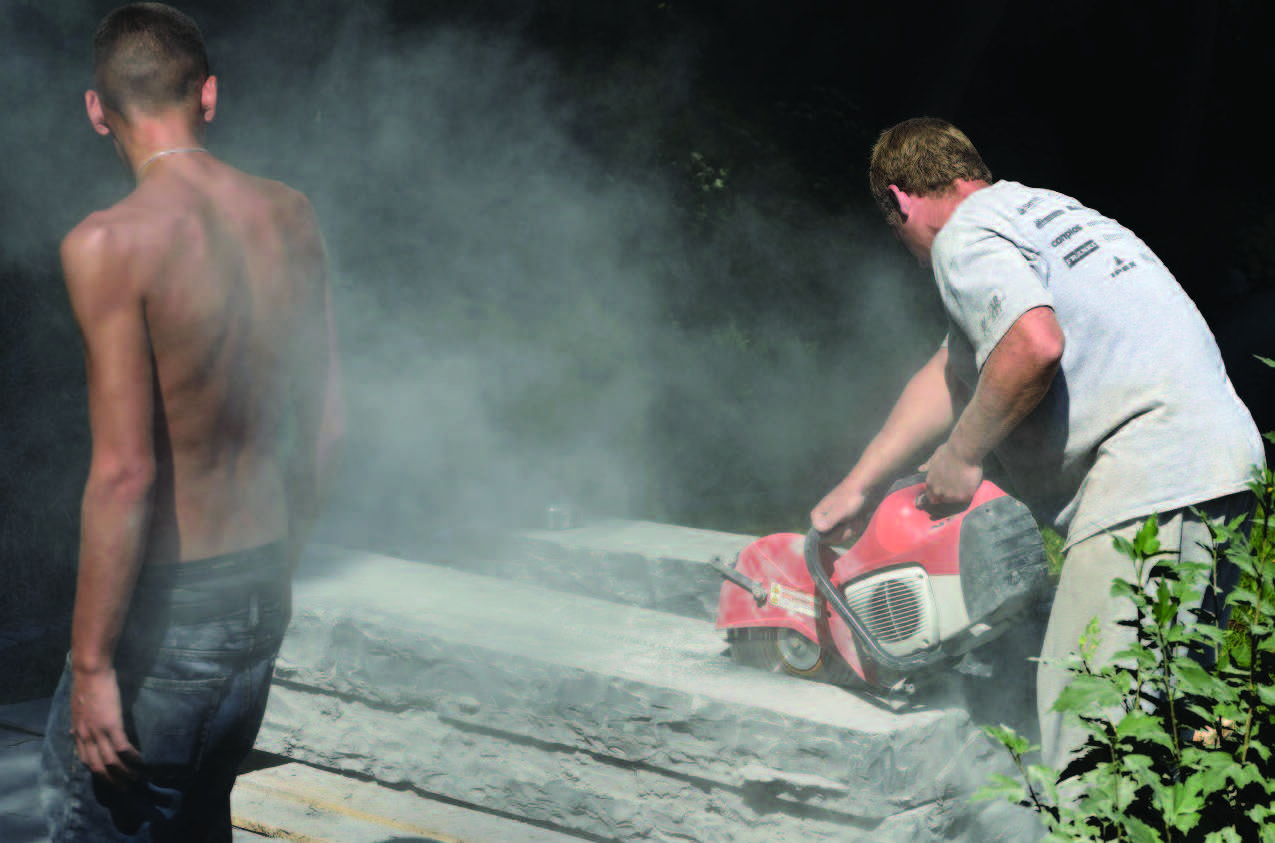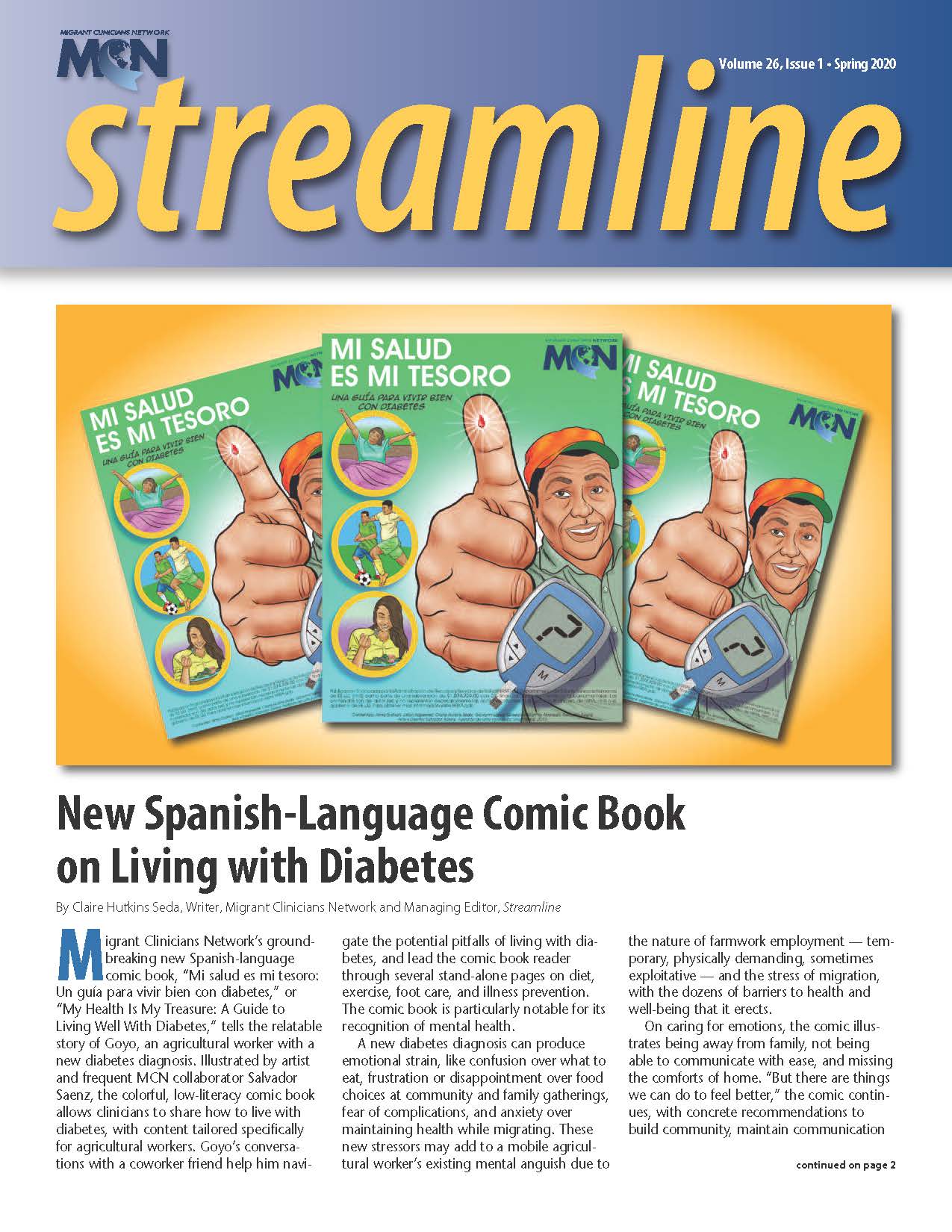
“If you go to the bathroom, it's dust. When we go to take lunch, on the tables, it's dust… Your nose, your ears, your hair, all your body, your clothes — everything. When you walk out of the shop, you can see your steps on the floor, because of the dust.” - Jose Martinez, 37, former polisher and cutter for a countertop company that sold engineered stone, who was diagnosed with silicosis. Two of his coworkers, also in their thirties, died of silicosis the year before.1
In kitchens across America, engineered stone countertops are being installed. With a look like granite but a wider variety of available colors and a less porous surface, the manufactured material has taken off in popularity -- and, despite its use in the stone fabrication industry for almost two decades, the occupational health hazards of engineered stone have only recently gained attention in the United States.
“This material contains a very high amount of silica,” explained Robert Harrison, MD, MPH, Clinical Professor of Medicine at the University of California, San Francisco. Most engineered stone has around 93 percent silica, mixed with a polyester resin. Silica is naturally occurring in stone, but natural countertop materials typically have less silica content; natural granite has a range of 10 to 45 percent silica.2 The high silica content in engineered stone -- called cultured or manufactured stone, and also called quartz -- results in hazardous levels of silica in dust when the engineered stone is cut, grinded, or polished. Workers who operate powered hand tools like saws, grinders, and high-speed polishers likely experience the highest levels of dust exposure in the stone fabrication industry.3
Inhalation of the dust can cause silicosis, a progressive, debilitating, and incurable disease that causes permanent lung damage and can cause death. Last year, Dr. Harrison and his colleagues in four states discovered 18 workers -- largely immigrant workers -- with silicosis. Most of the diagnosed workers had worked with engineered stone. Of those cases, two have died. Dr. Harrison and colleagues, in a National Institute for Occupational Safety and Health article, called the cases an “outbreak”, emphasizing the sudden and concerning increase of cases.4
Exposure to silica dust is dangerous when fabrication shops do not take the required measures to reduce dust exposure, Dr. Harrison said. About 90,000 stone workers are employed at thousands of shops across the country, some as small as just three workers, others in much larger facilities. Many of these facilities, however, don’t take precautions to reduce dust exposure.
“If companies were to adhere to the OSHA standards for silica, there would not be cases of silicosis,” Dr. Harrison said, referring to the Occupational Safety and Health Administration’s regulations on silica exposure, which were strengthened in 2017. He points to the ratio of OSHA inspectors to the number of shops. With the current number of inspectors, “the average company, big or small, would expect an OSHA inspection once every 140 years,” he said. In California, he noted, CalOSHA has significantly stepped up enforcement efforts but in many parts of the country, enforcement remains too low and shops are not sufficiently protecting their workers from dust.
In addition, health care providers are not recognizing silica dust exposure in their patients, Dr. Harrison said. “A lot of the cases that I investigated had been seen by their primary care doctors and specialists who had not taken a good occupational history at the outset,” he noted. He worries that there are many more cases of silicosis that are going undiagnosed. Medical testing for silicosis includes chest x-ray and breathing tests, but it starts with a detailed occupational history. “If a health care provider has a patient with respiratory symptoms or a history of working with stone, a red flag needs to go up, because the conditions in these shops can be very dusty,” he said. “Once you have scarring in your lungs, there’s no treatment. The data is really clear that if the disease is diagnosed at a more advanced stage, the disease can worsen even after exposure to silica dust stops. Early diagnosis can make a difference.”
Immigrants made up a majority of stone workers in the cases that Dr. Harrison and colleagues have reported. Many immigrant workers, particularly migratory or seasonal agricultural workers, may have multiple jobs simultaneously or over the course of the year. A thorough occupational history -- capturing not just the present primary occupation, but also additional part-time work, temporary work, and previous work -- is critical to assess possible exposure to silica dust.
Dr. Harrison continues to investigate silicosis cases among stone workers. “I want to know about every case,” he urged. He’s currently working on medical guidelines for health care providers as well as materials for employers including guidelines and fact sheets. In the meantime, he strongly encourages clinicians to stay alert to the occupation of their patients and notify OSHA or the state public health department if the worker has worked with stone. And, he wants to hear from you. “Just call me if you have any questions or see a case,” Dr. Harrison said.
1Greenfieldboyce N. Workers are Falling Ill, Even Dying, After Making Kitchen Countertops. NPR. 2 October 2019. Available at:
https://www.npr.org/sections/health-shots/2019/10/02/766028237/workers-are-falling-ill-even-dying-after-making-kitchen-countertops
2Hazard Alert: Worker Exposure to Silica during Countertop Manufacturing, Finishing and Installation. Occupational Safety and Health Administration. February 2015. Available at:
https://www.osha.gov/Publications/OSHA3768.pdf
3Hazard Alert: Worker Exposure to Silica during Countertop Manufacturing, Finishing and Installation. Occupational Safety and Health Administration. February 2015. Available at:
https://www.osha.gov/Publications/OSHA3768.pdf
4Dodd K, Heinzerling A, Rose C, Reeb-Whitaker C, and R Harrison. Outbreak of Silicosis among Engineered Stone Countertop Workers in Four States. NIOSH Science Blog. Centers for Disease Control and Prevention. 29 October 2019. Available at:
https://blogs.cdc.gov/niosh-science-blog/2019/10/29/silicosis-countertop/
Additional Information:
Dr. Harrison encourages health providers who have seen a case of silicosis among stone workers to contact him directly:
Dr. Robert Harrison
Telephone: 415 717 1601
Email: robert.harrison@ucsf.edu
Read the CDC’s recent Morbidity and Mortality Weekly Report (MMWR) on silicosis, entitled, “Severe Silicosis in Engineered Stone Fabrication Workers -- California, Colorado, Texas, and Washington, 2017 - 2019,” at https://www.cdc.gov/mmwr/volumes/68/wr/mm6838a1.htm.
Read more about Dr. Harrison’s work in this NIOSH blog post, “Outbreak of Silicosis among Engineered Stone Countertop Workers in Four States” at https://blogs.cdc.gov/niosh-science-blog/2019/10/29/silicosis-countertop/.
Screening Questions for Primary Care
Use MCN’s EHR-friendly concise and effective environmental/occupational health screening questions for the primary care provider. Access the resource, in English and Spanish, at https://bit.ly/2N2h9Hm.
Medical Surveillance on OSHA Silica Standard
In 2017, OSHA strengthened its silica standard, and released an FAQ list that includes information on medical surveillance, at https://bit.ly/2X14IQL.
Read this article in the Spring 2020 issue of Streamline here!
Sign up for our eNewsletter to receive bimonthly news from MCN, including announcements of the next Streamline.
